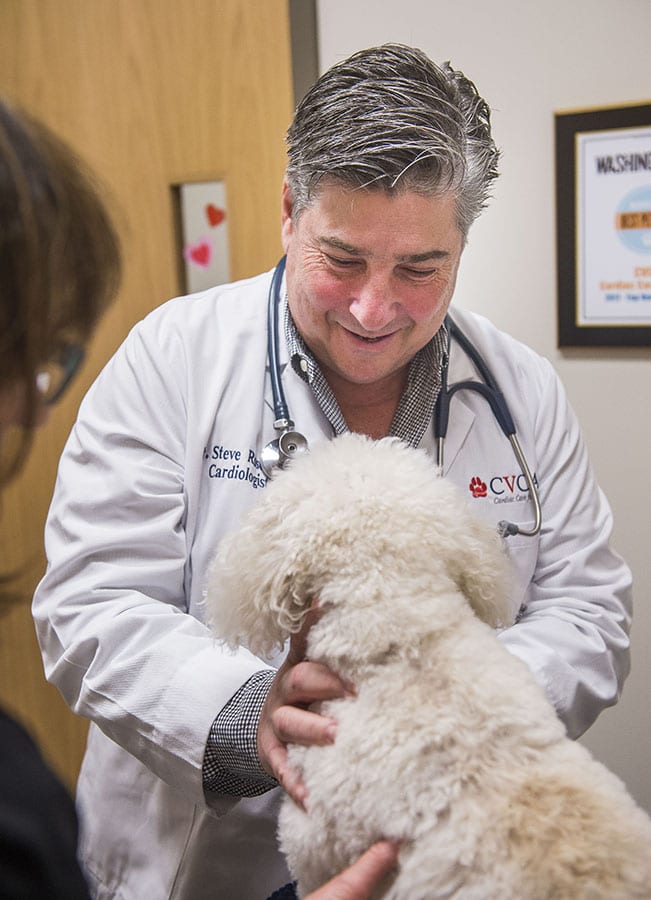Systemic Hypertension
Home » Systemic Hypertension
What is Systemic Hypertension?
- Blood pressure (BP) is the force exerted by circulating blood on the walls of blood vessels.
- Blood volume, constriction or dilation of the arteries, and heart rate all have an effect on blood pressure.
- In humans, measured as:
- Systolic pressure (immediately following ejection of blood from the heart).
- Diastolic pressure (just prior to ejection of blood from the heart).
- It is represented as systolic pressure/diastolic pressure, e.g. 120/80 mmHg.
- In pets, we typically only measure the systolic pressure (top number).
- Normal systolic pressure in dogs and cats is in the 120-130 mmHg range.
- An allowance of up to 160 mmHg systolic is often used since many of our patients are quite anxious in the hospital setting (“white coat effect”). Just like in humans, pets can have high blood pressure or systemic hypertension.


